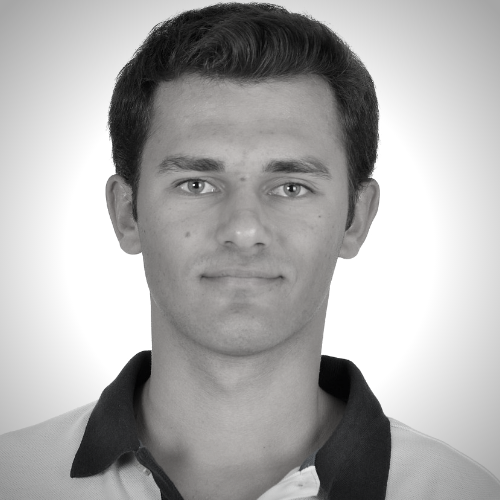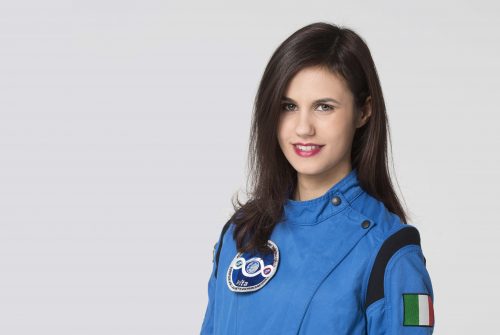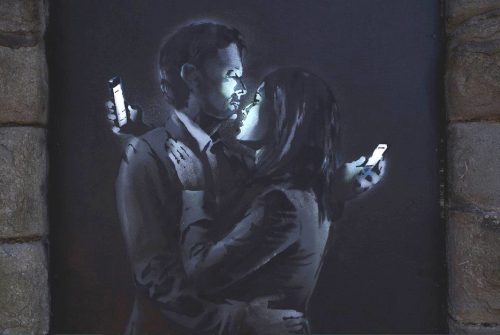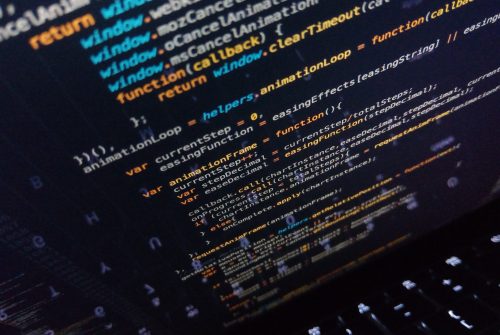Linda Raimondo: space mission!
8 April 2019 | Written by Guido Casavecchia
We interviewed the young student and science writer, already involved in numerous international projects.

Credits: Assunta Servello
The sky and the stars have always fascinated man and the dream of exploring space unites many young poeple from all over the world. Thanks to technological evolution and scientific progress, we know more and more things about the universe and its phenomena, but there are still so many things to study and discover. We talked about it with Linda, a young and go-getter future space explorer who, while waiting to navigate thousands of kilometeres from the Earth, has made numerous trips around the world, knowing some of the best astronauts and studying technologies aerospace of tomorrow.
Linda Raimondo, 19, is a physics student at the University of Turin. In any case, she wants to realize her dream of becoming an astronaut, burning the stages: at the age of 16, she organized astronomy conferences and at 18, she raised funds online to launch a probe that she presented to the Italian Space Agency. The European Space Agency, ESA, awarded Lisa for the “Space Exploration Master” competition, thanks to the design of a module designed to transport samples taken from the Moon and asteroids to Earth. She will test this project at NASA’s “Marshall Space Flight Center” for a year. In 2017, ESA selected it for a project to build a base on Mars. She also represented Italy at the first edition of the “Geospace Astronaut Training”, in Iceland. For some months now, she has become the new face of science dissemination for children on RAI GULP, as scientific advisor of the “Space Mission” TV show.
Let’s start from the experience that led you to represent Italy in Iceland, to the “Geospace Astronaut Training”.
Geospace Astronaut Training was a wonderful experience. On a warm July afternoon, I received the proposal from Orly – the organizer of the entire event – to participate in the first edition of this training program. He said it would be training in the same areas as the Apollo astronauts trained before going to the Moon, including Armstrong, Aldrin, and Collins. Obviously, I have accepted it. Therefore, in mid-September, I found myself on a plane and landed in Reykjavík, greeted by an icy wind. The next day I met my crewmates. An all-female team, as opposed to the Apollo mission crews, who were only men. We did speleology, volcanology, geology and astrobiology lessons with the best professors from the University of Cambridge and Husavik (the Icelandic city that hosted us). We went down into the quarries underground and walked among the geysers of a Vulcan. We collected soil samples for analysis in the laboratory and attended lectures. The program lasted only 4 days, but they were very intense. It was a really beautiful and instructive experience. We have also formed a nice group and we are still in touch today, despite the fact that we live in different parts of the world.
With the European Space Agency, ESA, you have worked on a future base on Mars. What is the project about?
For the Odysseus Space Contest, we did a precise technical job. Starting from NASA data, we have identified the best place to land to build a “Martian” base, which can be almost completely self-sufficient. We proposed a virtual reality model of the base and we tried to reproduce the Martian regulatory in the laboratory. It served to understand, at first, if it could be possible to extract water from a sample of Martian soil and then to see if it could be the right soil for growing plants. We managed to extract the water, but we realized that it is not possible to grow plants using only and exclusively Martian soil. To make them grow you have to mix the Martian regolith with the terrestrial humus.
When and how did your passion for the stars begun?
I don’t know exactly when this passion was born. Since I can remember, I’ve always looked at the stars since I was a child. I went to the backyard to observe the sky and the infinity of shiny dots that were above my head. It’s something that has always excited me, but I don’t know why. At the age of four, I started asking my father to take me to the moon. When he replied that he could not take me there, I burst into tears. With the passage of time, my passion has increased more and more. I started to participate more actively in the world of astronomy and astronautics, attending or organizing events and conferences. Studying I understood much more about the planets, the stars, their birth, and life. After high school, I decided to enroll in the degree course in Physics in order to obtain, later, a degree in astrophysics.
You are a well-known face of science dissemination thanks to the TV program you lead on RAI GULP. What are the kids’ knowledge and what are the right strings to touch to get them interested in scientific topics?
My experience with my peers, whether we talk about science or space, is always positive. We are a curious generation. Children are interested in understanding the functioning of space “machines”, but also in listening to the voice of astronauts and researchers. In short: if you talk with passion and as a passionate person, it is not difficult to find the “right key”.
How do you expect the space industry and the study of astronomy to evolve over the next few years?
This is certainly something I cannot predict with certainty. What I hope, however, is that we continue on the road that in recent years, more than ever, has been undertaken. I’m talking about the path of exploration. A road that is not easy, but that can take us a long way.
Why should we, therefore, continue to explore space?
Well, maybe because humanity’s future mining spot is right there. One day, probably, astronautical technologies will allow us to colonize the Moon or Mars and exploit their mineral resources. One day the asteroids could provide us with precious materials, useful for the humanity of the “old” Earth, over-exploited in this era of the Anthropocene. There must be no limits to the possibilities or even to dreams. Space will give new visions to the sense of the existence of Man. Let’s think about what it would mean for humanity to discover the existence of intelligent life elsewhere. It would be, as it was for astronomy, a Copernican revolution.





